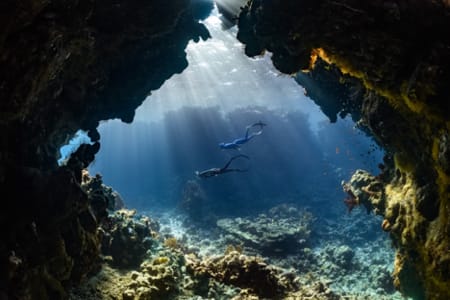Wild swimming refers to open water swimming where people mainly go to natural locations around lakes, mountain rivers, or sea inlets. One of the reasons why wild swimming is so unique and enjoyable is provided by the splendor, clearness, and the intensity of the surroundings.

Keeping Safe
- Have water sense at all times. Wildlife reserves are excellent places where one can get to know all the water details like temperature, depth, current, and wildlife. Moreover, cold regions would certainly mean needing neoprene-made implemented clothing, and always obeying the signage.
- Respect the law and be safe. Nearly all countries have strict regulations on outdoor swimming. Many protected areas may only allow swimming during certain times of the year. Plitvice and Rio Celeste have controlled swimming spots.
- Prepare yourself with information and professional advice. It is crucial to get well-informed from the people at the location, trustworthy travel guides, and extreme sports podcasts, with a focal point being reliable data sources. Furthermore, information foci such as equipment and physical fitness are useful in minimizing risks.
- Do not swim alone, as this poses a far greater danger in case of accidents. It is essential to have a swimming buddy, or you could let someone else know when and where you will be swimming.
1. Lago di Sorapis, Italy
Lago di Sorapis sits at the heart of the Italian Dolomites and is a beatific azure mountain lake, the emerald water, which is actually the color of the rural turquoise, is there amid the bare rocks and the pine forest which so nicely copes with the wild. The trail you will take is mostly rocky and a little bit challenging, but it is really doable for the majority of hikers, and it will definitely be a pleasant 3–4 hours walk in total.
Why swim here?
- Outstanding highland panorama
- Place for solitude when the numbers of visitors are lower
- Provided you stick to the trails, you have no problems finding your way
Best time to visit: Late June to early September, as this period is the one during which the trails are clear of snow and water conditions are at their safest.
2. Cenote Escondido, Mexico
Make sure to include a trip to the Yucatán Peninsula in Mexico when planning an adventure of a lifetime, including swimming in Cenote Escondido. Natural pit holes formed by the erosion of limestone, usually via underground water, are the most typical attributes of Cenote Escondido.
Pro tip: The best thing you can do is to get tips and facts as much as possible before your visit. Try tuning in to a podcast that targets cave diving as its main focus or touches on other topics about cenote swimming. Via the podcast, the experts will tackle the issue of safety, talk about the rules set by the locals, and provide practical information about the specialized equipment designed explicitly for the water sports that are practiced underground.
3. Blue Lagoon, Iceland
The Blue Lagoon of Iceland offers to bathe in clean water of an azure color that is warmed geothermally – it is the perfect place for swimming. The lagoon is a closed ecosystem, and fresh water from the nearby Svartsengi geothermal power plant fills it. One can also notice the color of the water, which is milky blue, and the temperature of the lagoon water remains at 98–102 °F (37–39 °C) all year round and throughout the different months.

Why this works for a wild swim vibe:
- Has the serene ambiance of a natural geothermal pool
- Scenic lava fields and mossy expanses
- Often comes with ease-of-access and on-site spa amenities
Even though it is one of the top tourist destinations, one can choose to visit during off-peak hours or even consider booking a spot in a remote area to get the best out of an environment that nature intended.
4. Plitvice Lakes, Croatia
UNESCO has designated Plitvice Lakes National Park in Croatia a World Heritage Site. One of the reasons Plitvice is so famous is the unique natural water system that allows pure water to run to the terraces, creating lakes and falls with different levels of clear water and untouched nature.
What is its uniqueness:
- This lake area is an extraordinary, multi-level lakeside with fantastic knobs of vertically oriented rock with layers of flora interlaced with crystal clear and pure water.
- Waterfalls resemble mountain rivers, and mist is created by the water falling from different levels. The ground is rich in calcium carbonate. The park is relatively secluded and is known for preserving the natural world well.
Swimming is allowed in some places within the park, so the key task is to respect the rules set by the area. Swimming might be possible only in the cleanest lakes and/or during certain times of the year so that both the environment and swimmers are safe.
5. Lake Crescent, USA
In the state of Washington, in Olympic National Park, travelers can find Lake Crescent, a bottomless glacial lake with crystal clear water and mountains surrounding it. Generally, the water temperature varies from 55 to 65 °F (12–18 °C), thus, it is mainly a place for skilled or those who can wear wetsuits. The tranquil water of the lake, as well as the difficulty of access, actually depicts the true nature of the lake.
Advantages of Lake Crescent:
- Wonderful mountainous views
- Canoeing, kayaking, and lakeside camping opportunities
- The historic Lake Crescent Lodge is nearby
If you are swimming from the bank or rowing, you will have a very peaceful time going deep into the wild.
Vlad Sodyl